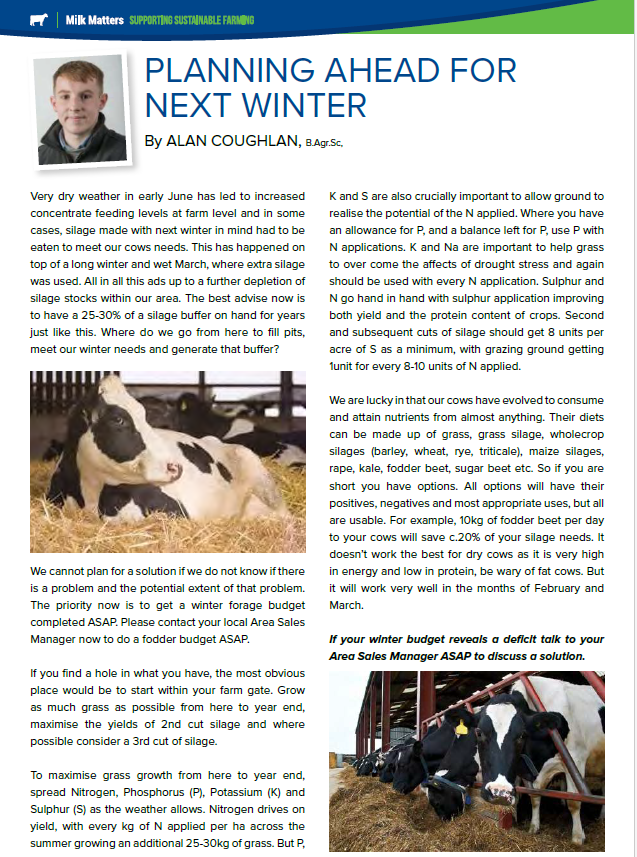Get a 24 hour weather forecast

Very dry weather in early June has led to increased concentrate feeding levels at farm level and in some cases, silage made with next winter in mind had to be eaten to meet our cows needs. This has happened on top of a long winter and wet March, where extra silage was used. All in all this ads up to a further depletion of silage stocks within our area. The best advise now is to have a 25-30% of a silage buffer on hand for years just like this. Where do we go from here to fill pits,
meet our winter needs and generate that buffer?
We cannot plan for a solution if we do not know if there is a problem and the potential extent of that problem. The priority now is to get a winter forage budget
completed ASAP. Please contact your local Area Sales Manager now to do a fodder budget ASAP.
If you find a hole in what you have, the most obvious place would be to start within your farm gate. Grow as much grass as possible from here to year end, maximise the yields of 2nd cut silage and where
possible consider a 3rd cut of silage. To maximise grass growth from here to year end, spread Nitrogen, Phosphorus (P), Potassium (K) and Sulphur (S) as the weather allows. Nitrogen drives on yield, with every kg of N applied per ha across the summer growing an additional 25-30kg of grass. But P, K and S are also crucially important to allow ground to realise the potential of the N applied. Where you have an allowance for P, and a balance left for P, use P with N applications. K and Na are important to help grass to over come the affects of drought stress and again should be used with every N application. Sulphur and
N go hand in hand with sulphur application improving both yield and the protein content of crops. Second and subsequent cuts of silage should get 8 units per
acre of S as a minimum, with grazing ground getting 1unit for every 8-10 units of N applied. We are lucky in that our cows have evolved to consume
and attain nutrients from almost anything. Their diets can be made up of grass, grass silage, wholecrop silages (barley, wheat, rye, triticale), maize silages,
rape, kale, fodder beet, sugar beet etc. So if you are short you have options. All options will have their positives, negatives and most appropriate uses, but all
are usable. For example, 10kg of fodder beet per day to your cows will save c.20% of your silage needs. It doesn’t work the best for dry cows as it is very high in energy and low in protein, be wary of fat cows. But it will work very well in the months of February and March.
If your winter budget reveals a deficit talk to your Area Sales Manager ASAP to discuss a solution